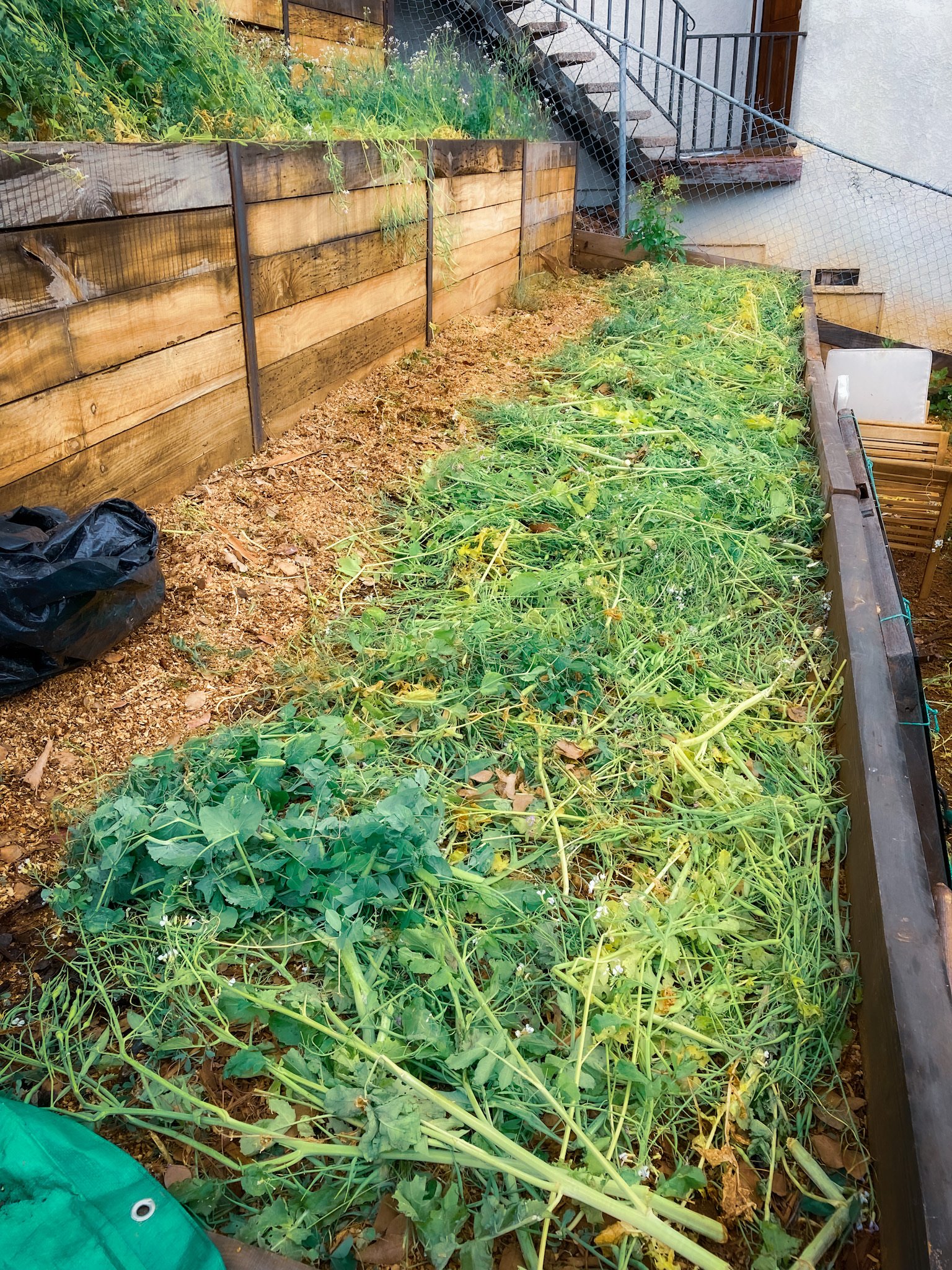Farm Practices
Healthy Plants come from Healthy Soil —
Everything we grow here is organic, which means without pesticides or fertilizers. This farm is managed with regenerative farming practices. The basic idea is that the magic is in the soil: keep the soil healthy, and the plants will be healthy. Pests do not typically attack healthy plants; they go after plants already struggling in some way.
To keep the soil thriving, we add our homemade worm compost, mulch regularly and ensure the soil stays moist all year with drip line irrigation. In addition, we use cover crops in each farm row periodically to help rebuild the soil. We then use the chop and drop method to reintegrate the stalks, flowers, and fruits of the cover crop plants as organic matter to continue building the soil.
Building the Soil from Scratch —
When we started the farm, we had soil tests done to ensure there were no toxic metals or other contaminants we needed to remediate. We also found out that we were working with artificial fill dirt used for construction grading as our topsoil. That meant we had to do some work upfront to turn the fill dirt into living soil before growing plants for food.
We started each row with multiple rounds of cover cropping, chop and drop, solarizing, and a final round of sheet mulching. For our sheet mulching, we started with the base soil and then added worm compost tea and organic matter from the cover crops, then cardboard, and finally, a few inches of new organic soil on top of the cardboard. This whole ensemble was then watered daily to help get the cardboard to soften and break down. This no-till approach helps keep the soil's microbial life going strong without breaking up their microscopic networks underground. This means whatever work the cover crops had already done to improve the soil health while growing was built upon rather than being disturbed by tilling.
Planting for Food —
In order to keep the soil healthy while growing plants, we do a combination of companion planting, crop rotation, and succession planting. Ultimately, this means that the soil is never exposed, as one plant removes nutrients, others nearby replenish them, and there is food ready to harvest for longer periods of time. Succession planting ensures that as one thing gets ready to harvest, another starts to grow, so the soil is always in a cycle of growth and decay. It also extends the harvest window, so food is available for longer.


